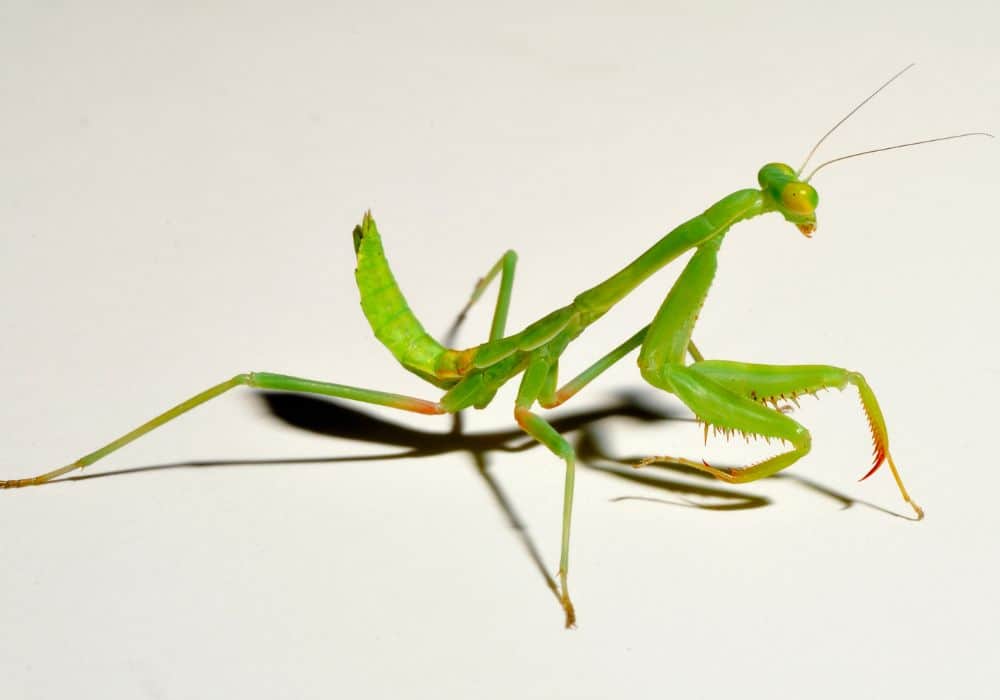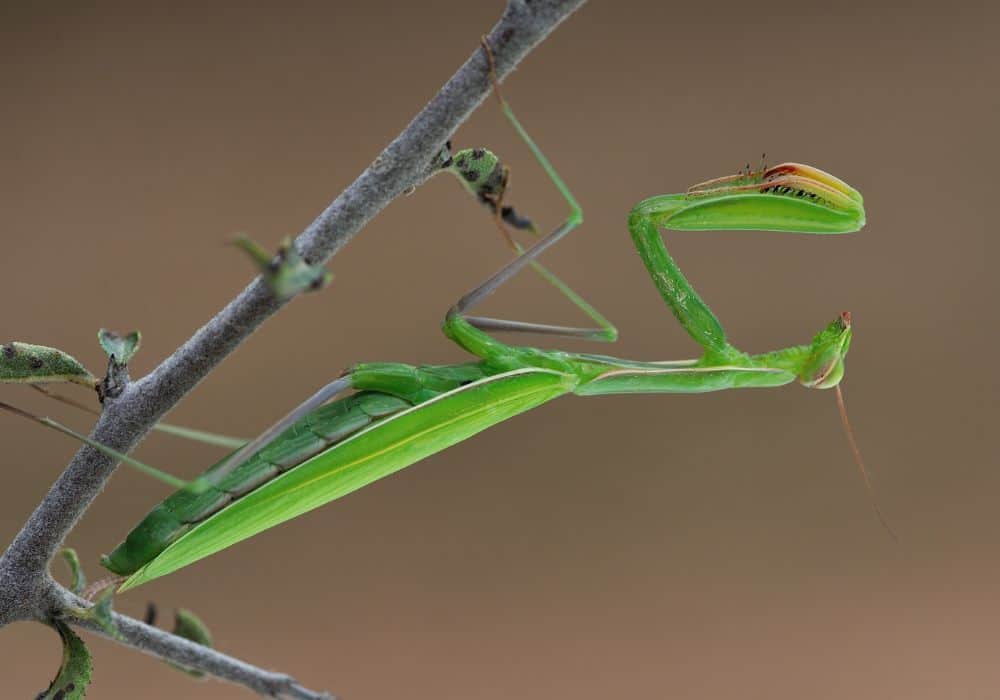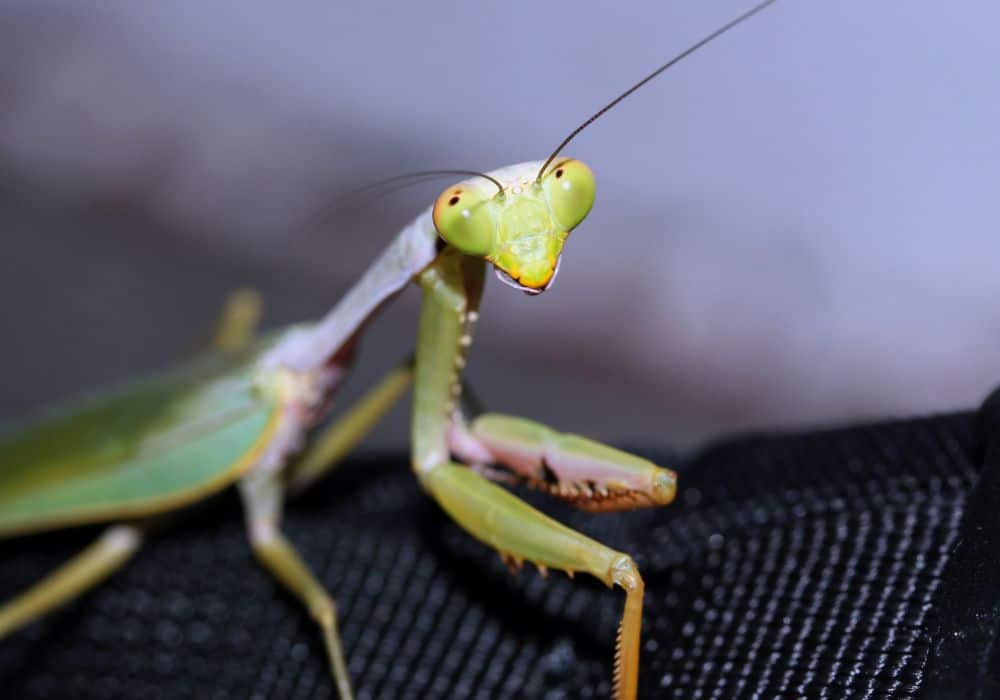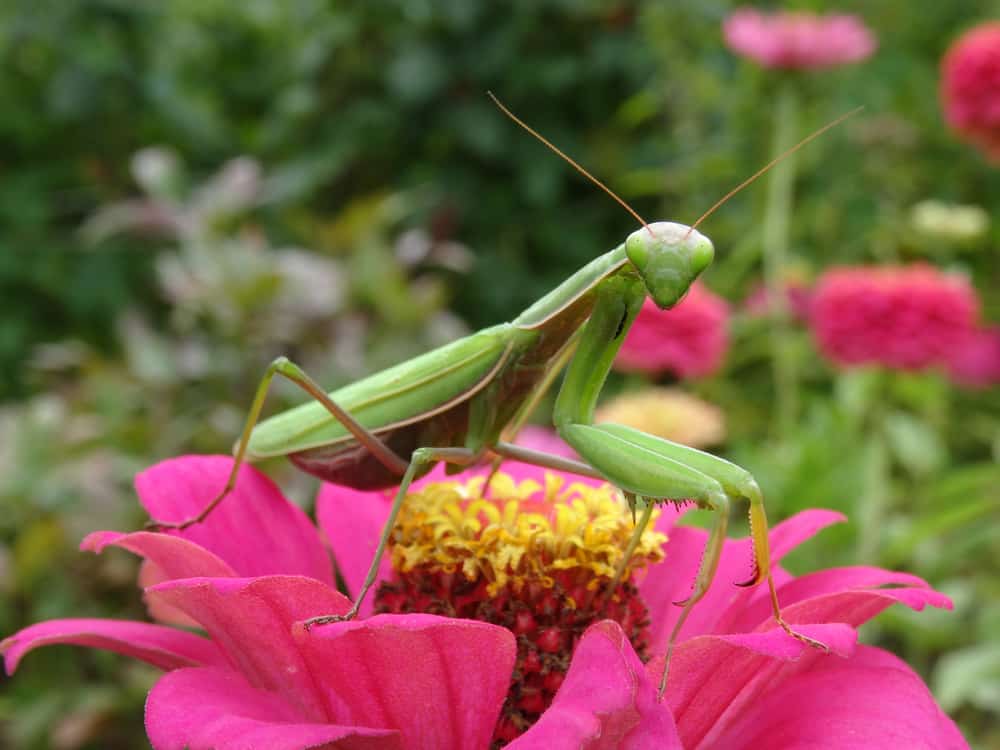Praying mantises are predatory insects that are known to be vicious hunters of smaller, unknowing bugs. They can look quite threatening even to people because of their long bodies, arms, and mandibles.
But do praying mantises bite humans, or do they stick to hunting down their prey only? And if you’re unlucky enough to get bitten, do praying mantis bites hurt?
We’ll cover all this and more in this article. Keep reading to learn more about the graceful yet strong praying mantis, whether they bite people, and how worried one should be if they get bitten by these creatures.
What is a Praying Mantis?

Praying mantises are elongated predatory insects known for their long, folded front legs that they hold in a “praying” position. That’s why they were given the name Mantis religiosa, or praying mantis.
These insects are about 2-5 inches long and green or brown in color. Adult praying mantises hang wings, but they don’t use them. They have six legs—four for walking, and two front legs for hunting. They use these front legs to catch their prey.
True to its name, the praying mantis is a calm ambush predator. They sit motionless on plants and flowers as they watch their prey before attacking quickly with their front legs. They can even turn their heads a full 180 degrees to watch their prey without making any movements. Very cool!
Their favorite insects to eat include flies, butterflies, beetles, bees, crickets, grasshoppers, and other tiny bugs. Sometimes, the more aggressive and larger adult praying mantises will also eat small birds, lizards, and frogs.
Want to learn more interesting fun facts about praying mantises? Watch this video to discover more about this predatory insect:
Can a Praying Mantis Bite You?
These graceful insects are fascinating to watch, but is it dangerous to come too close to them? Can a praying mantis attack humans and bite them?
Praying mantises don’t usually bite humans. However, they might accidentally nip you if they mistake your small finger for prey. This doesn’t happen often, though, as they have excellent eyesight that allows them to distinguish insects and small animals from a human finger.
If a praying mantis were to bite you, it’s not with their teeth. Instead, they use their mandibles—sharp jaws that cut and grind their prey. These sharp mouthparts are great for gobbling up their food but do little to harm or break human skin.
A praying mantis might bite a person in self-defense if they feel threatened or provoked. This insect has a distinct antisocial behavior, so handling it roughly with your bare hands may bother them and force them to bite you.
Curious to see what a praying mantis bite happens? Watch as a man teases and provokes a praying mantis until it bites his finger:
Do praying mantis bites hurt?
Thankfully, praying mantis bites don’t usually hurt. If a smaller mantis that is 2-3 inches long bites you, you might not even feel the bite because it’s so small. If a larger mantis bites you, you might feel a sharp pinch.
There should be little to no pain at all if you find yourself bitten by a praying mantis. At most, there may be a mild irritation or discomfort that goes away in just a few minutes or hours.
Is a praying mantis bite poisonous?
There are plenty of venomous insects out there, like black widow spiders and fire ants. Thankfully, the praying mantis is not one of them. They don’t have any venom in their system. So, on the off-chance that you do get bitten by one, you never have to worry about it being poisonous.
Additionally, praying mantises aren’t known to carry bacteria or harmful pathogens that they can transfer to people. You don’t have to worry about diseases transmitted through their bites.
Symptoms of a Praying Mantis Bite

For most people, there may not even be any symptoms of a praying mantis bite apart from the initial sting of the bite. But for others, especially those with sensitive skin, there may be distinct signs of the bite on the affected area. Here are some of those symptoms:
- Swelling and redness at the site of the bite
- Mild discomfort or pain if a larger mantis bit you
- Itchiness from a small rash
- Skin allergies for those sensitive to insect bites
While praying mantis bites are usually harmless, it won’t hurt to seek medical attention if you notice one or more of the symptoms above. If you see a wound from the bite, it’s also best to perform first aid treatment to speed up its healing process.
What to Do If You Get Bitten by a Praying Mantis
If you get bitten by a mantis, don’t panic. Remember, they’re not venomous and don’t carry pathogens that lead to disease, so nothing severe will happen to you.
However, you still need to watch out for possible infections in case dirt and bacteria enter broken skin from a bite. You also want to soothe the skin right away so that swelling and irritation are minimal. Here’s exactly what to do right after getting bit by a praying mantis:
- Wash your hands (or whatever part of your skin the mantis has bitten) with warm water and antibacterial soap. Make sure to lather the soap well and focus your cleansing on the affected area.
- Rinse under running water and dry your hands completely with a clean towel.
- Apply an antiseptic ointment to prevent infections from arising. You can also apply calamine lotion if the bite feels a bit itchy.
- Leave the bite alone to heal. Don’t touch or scratch it, even if it feels uncomfortable or itchy.
While the bite heals, keep an eye out for signs of infection. It’s very rare for this to happen from a praying mantis bite, but it’s still best to look out for severe inflammation and redness, pus forming in the bite, and fever. Seek medical attention right away if you see any of these.
How to Avoid Getting Bitten by a Praying Mantis

It’s rare for a praying mantis to go out of its way and bite a human. But if you’re still anxious about getting bitten by this predator insect, it’s quite valid. Luckily, there are plenty of things you can do to avoid getting bitten by it.
First, avoid handling a praying mantis with your bare hands. These solitary creatures don’t like being disturbed. If you provoke them, they may feel the need to attack with their front legs and bite with their mandibles. Watch the mantis from a safe distance to respect their space.
If you must move a praying mantis from one place to another (perhaps in your garden), make sure to use the right tools, never your hands. Use a cup to get the mantis and take it to another spot. It may also be a good idea to wear gardening gloves while you do this for extra precaution.
Is It Possible to Have a Praying Mantis Infestation at Home?
Many people assume that if they find one insect in their home, it could be a sign that there is already an infestation. While this is true for many insects, like cockroaches and moths, it’s not the same for praying mantises.
Praying mantises are solitary insects. They don’t band together and congregate to form a group. So, just because you see one or two praying mantises in your patio or garden, it doesn’t mean you should be worried about more coming into your home.
So, there’s no need to panic and call pest control if you see these insects. Because they eat insects and small animals, they won’t touch or harm your plants, flowers, and crops.
If anything, they’re beneficial to your garden because they can eat other pests that gobble on your crops. Seeing a praying mantis in your outdoor space is actually a sign of a balanced ecosystem. It’s best to create a nice habitat for them with lots of places to hide and thrive to keep them around.
Conclusion
It’s not likely for a praying mantis to bite you. The only reason why they would go out of their way to “bite” your skin with their mandibles is if you threaten or provoke them in any way. Thankfully, praying mantises don’t have venom, so these bites are superficial and never poisonous.
And don’t worry—even if you do get bitten by a praying mantis, it won’t hurt that much. If a small praying mantis bites you, you might not even feel a thing. And if a larger one bites you, the most you’ll feel is a quick, sharp sting and some discomfort that goes away in a few minutes or hours.
If you have a praying mantis bite, be sure to wash your skin with soap and water right away. Apply your favorite anti-itch ointment or calamine lotion to keep itching at a minimum. In no time, the harmless bite will disappear.
